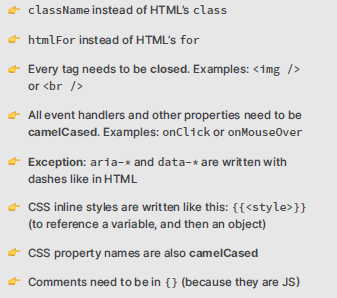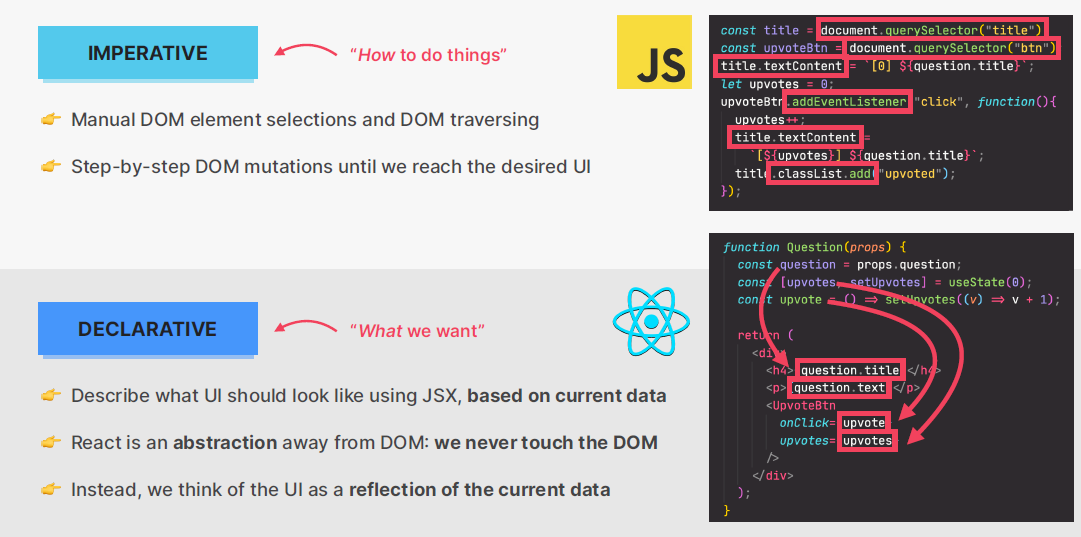A declarative syntax that describes what components look like and how they work based on their data and logic
- Components must return ONE block of JSX
- JSX is an extension of JavaScript that allows us to write HTML-like syntax inside JS. This makes writing React components more intuitive.
- JSX is not valid JavaScript—browsers don’t understand it directly. That’s where Babel comes in.
- Babel is a tool that converts JSX into plain JavaScript so that browsers can interpret it.
JXS you write:
const element = <h1>Hello, world!</h1>;Gets converted into:
const element = React.createElement("h1", null, "Hello, world!");- React.createElement() returns a JavaScript object (called a “React element”), which React uses to render HTML on the screen.
- Notice this was also returned in the Pure React lecture
Rules
General JSX Rules
-
JSX works essentially like HTML, but we can enter “JavaScript mode” by using {} for text or attributes
- In {}, we place JS expressions (anything that produces a value, like reference variables,
[].map(), ternary operators, etc). Statements are NOT allowed (if/else, for, switch)
- In {}, we place JS expressions (anything that produces a value, like reference variables,
-
JSX produces a JavaScript expression (the conversion above)
- piece of JSX is just like any other JS expression
- We can place other pieces of JSX inside {}
- We can write JSX anywhere in a component (in
if/else, assign to variables, pass it to functions, etc)const el = <h1> Hello! </h1>;
-
ONLY 1 ROOT ELEMENT
- if needed more, use
<React.Fragment>(<>)
- if needed more, use
-
Differences bet JSX and HTML

Declarative VS Imperative

- Declarative
- Describe what the UI should look like using JSX at all times, based on current data (props and state)
- We only tell how we want the UI to look like, and NOT how to achieve it step by step (React will figure that out)
- NO DOM manipulation
- React is basically a huge abstraction away from the DOM so we don’t touch it directly)
- Imperative
- Vanilla JS
- Manual DOM element selections and DOM traversing
- Step by step DOM mutations until we reach the desired UI
- tell the browser EXACTLY how to do things (which is lowkey impossible for a slightly complicated application)
Styling JSX
Inline
- We need to define inline styles using a JS object (easiest way)
function Header() {
return (
<h1 style={{ color: "red", fontSize: "3rem" }}>Fast React Pizza Co.</h1>
);
}
function Header() {
const style = { color: "red", fontSize: "3rem" }
return (
<h1 style={style}>Fast React Pizza Co.</h1>
);
}External
- in JSX, you cannot use “class” but you have to use “className”
import "./index.css";
function Header() {
return (
<header className="header">
<h1>Fast React Pizza Co.</h1>;
</header>
);
}